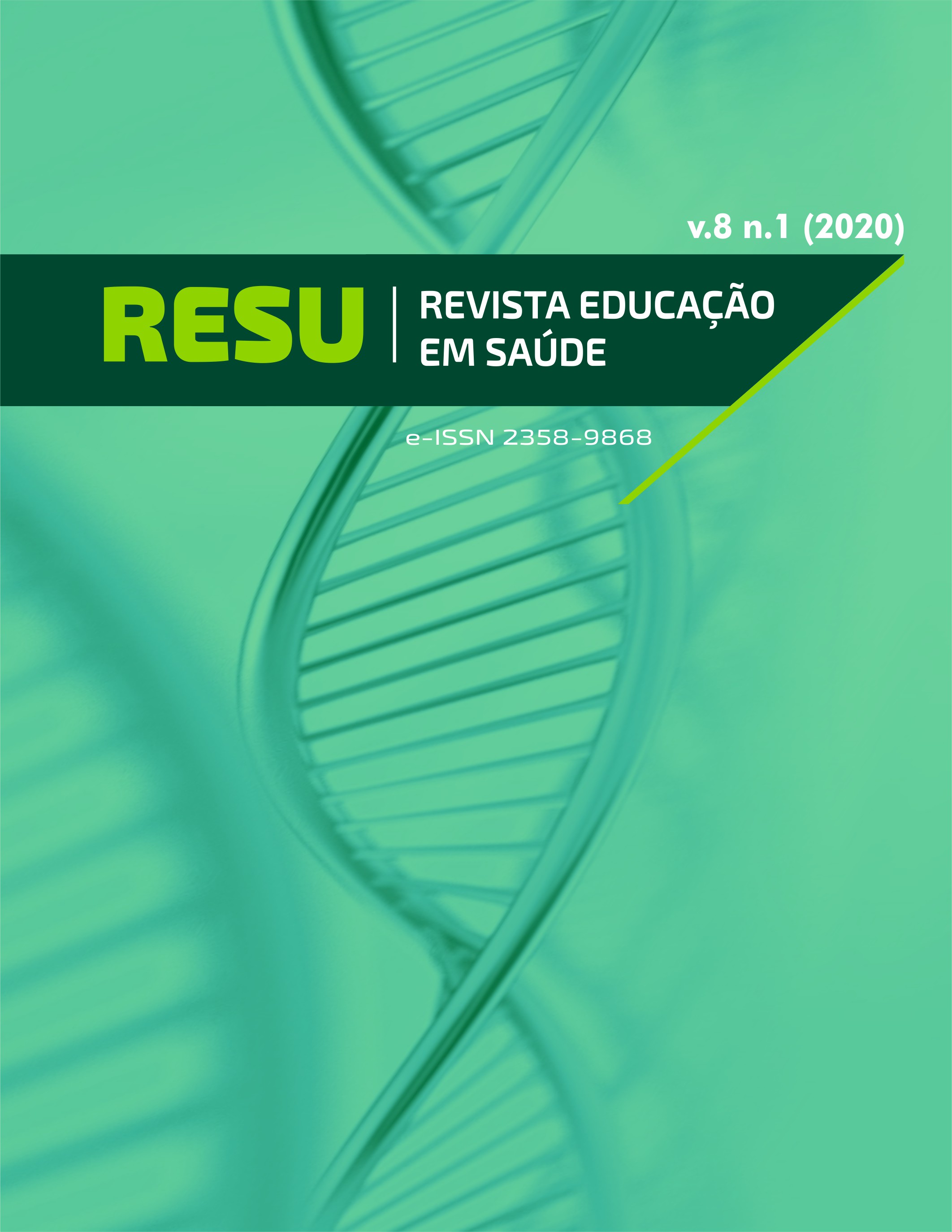Aterosclerose carotídea: perfil epidemiológico dos portadores da doença na região sul do Maranhão
PERFIL EPIDEMIOLÓGICO DOS PORTADORES DA DOENÇA NA REGIÃO SUL DO MARANHÃO
DOI:
https://doi.org/10.29237/2358-9868.2020v8i1.p136-141Palavras-chave:
Ultrassonografia doppler. Ateromatose carotídea. Comorbidades. Fatores de risco.Resumo
Objetivo: Considerando a importância epidemiológica da aterosclerose carotídea (AC), bem como o impacto de suas complicações, decidiu-se analisar o perfil epidemiológico dos pacientes que foram submetidos ao exame de ultrassonografia com doppler das artérias carótidas, usando parâmetros como idade, sexo, tabagismo e doenças sistêmicas (hipertensão arterial, diabetes mellitus e acidente vascular encefálico). Métodos: Os dados foram obtidos a partir da análise de fichas de atendimento disponibilizadas por uma instituição privada de Imperatriz–MA, que oferece o serviço de doppler ecografia de carótidas, no período de janeiro a dezembro de 2017. O exame ultrassonográfico teve como objetivo a localização e quantificação de lesões ateromatosas das carótidas. Resultados: Foram estudados 274 indivíduos, cuja faixa etária variou entre 18 e 99 anos, com idade média de 59,63 anos (± 11,78), dos quais 198 (72,3%) eram do sexo feminino e 76 (27,7%) masculino. Desses, 183 (66,8%) afirmaram ser hipertensos, 47 (17%) diabéticos, 26 (9,5%) tabagistas e 58 (21,2%) ter história pregressa de acidente vascular cerebral (AVC). Conclusões: Houve maior prevalência de placas ateromatosas nos exames dos pacientes do sexo masculino e os testes de significância revelaram forte associação entre alterações no exame e hipertensão arterial (p=0,0004), diabetes miellitus (p<0,0001), AVC prévio (p<0,0001) e idade avançada (p<0,0001). Tabagismo não associou-se a maior quantidade de exames alterados (p=0,8239), porém a amostra de pacientes tabagistas não foi suficiente.
Referências
2. Santos C, Vieira J, César B, Novaes M. Hábitos e perfil socioeconômico do paciente aterosclerótico no Brasil. Com. Ciências Saúde. 2011; 22(3):247-256.
3. Baldassarre D, Amato M, Bondioli A, Sirtori CR, Tremoli E. Carotid artery intima-media thickness measured by ultrasonography in normal clinical practice correlates well with atherosclerosis risk factors. Stroke, v. 31, n. 10, p. 2426–30, 2000.
4. Yoon B, Bae H, Kang D, Lee S, Hong K, Kim K et al. Intracranial Cerebral Artery Disease as a Risk Factor for Central Nervous System Complications of Coronary Artery Bypass Graft Surgery. Stroke, v. 32, n. 1, p. 94–99, 2001.
5. Borelli F, Pinto I, Amodeo C, Smanio P, Kambara A, Petisco A et al. Analysis of the Sensitivity and Specificity of Noninvasive Imaging Tests for the Diagnosis of Renal Artery Stenosis. Arq Bras Cardiol. 2013;101(5):423-433.
6. Godoi E. Avaliação do acometimento arterial por ultra-sonografia Doppler em pacientes com esclerose sistêmica no Hospital das Clínicas da Universidade Federal de Pernambuco. J. vasc. bras. vol.7 no.2 Porto Alegre June 2008.
7. Callegari-jacques SM. Bioestatística - princípios e aplicações. 1 ed. Porto Alegre: Artmed; 2003.
8. Malgor R, Wood E, Iavarone O, Labropoulos N. Stratifying risk: asymptomatic carotid disease. J. vasc. bras. vol.11 no.1 Porto Alegre Mar. 2012.
9. Packard R, Libby P. Inflammation in atherosclerosis: from vascular biology to biomarker discovery and risk prediction. Clin Chem. 2008;54:24-38.
10. Kotsis V, Stabouli S, Papamichael C, Zakopoulos N. Impact of obesity in intima media thickness of carotid arteries. Obesity. 2006;14:1708-15.
11. Rosa M, Portal V. Prevalência de Estenose Carotídea em Pacientes com Indicação de Cirurgia de Revascularização Miocárdica. Arq Bras Cardiol 2010; 94(2): 182-187.
12. Silva T, Pimentel L, Barbosa R, Santos M, Carvalho F, Santos L et al. Aterosclerose de carótida: associação entre o lado acometido com fatores de risco e doenças sistêmicas. Rev. Educ. Saúde 2018; 6 (2): 82-88.
13. Lorenz M, Kegler S, Steinmetz H, Markus H, Sitzer M. Carotid Intima-Media Thickening Indicates a Higher Vascular Risk Across a Wide Age Range. Stroke. 2006;37:87–92.
14. Flórez-Cardona J, Flores-Silva F, Chiquete E, Reyes-Melo I, Cantú-Brito C. Prevalencia de enfermedad carotidea en un hospital de tercer nivel de atención en el Distrito Federal, México. Acta Neurol Colomb. vol.28 no.4 Bogotá Oct./Dec. 2012.
15. González L, Arrieta H, Solís A, Pérez P, Ramírez S. Estudio con ultrasonido doppler color en la caracterizacion de la enfermedad aterosclerotica carotidea oclusiva sintomática. Revista Chilena de Radiología. Vol. 15 Nº 3,2009:110-121.
16. Flumignan C, Flumignan R, Navarro T. Estenose de carótida extracraniana: revisão baseada em evidências. Rev. Col. Bras. Cir. vol.44 no.3 Rio de Janeiro May/June 2017.
17. Luo X, Yang Y, Cao T, Li Z. Differences in left and right carotid intima-media thickness and the associated risk factors. Clinical Radiology, v. 66, n. 5, p. 393–398, 2011.
18. OPAS - Organização Pan-Americana da Saúde. Doenças Cardiovasculares. Disponível em: <https://www.paho.org/bra/index.php?option=com_content&view =article&id=5253:doencas-cardiovasculares&Itemid=1096>. Acesso em: 28 de agosto de 2017.


